Ancient Chinese art is arguably one of the oldest continuous traditions in the world. Chinese art can be dated back to 10,000 BC, the Neolithic period, when simple pottery and sculptures were mostly common.
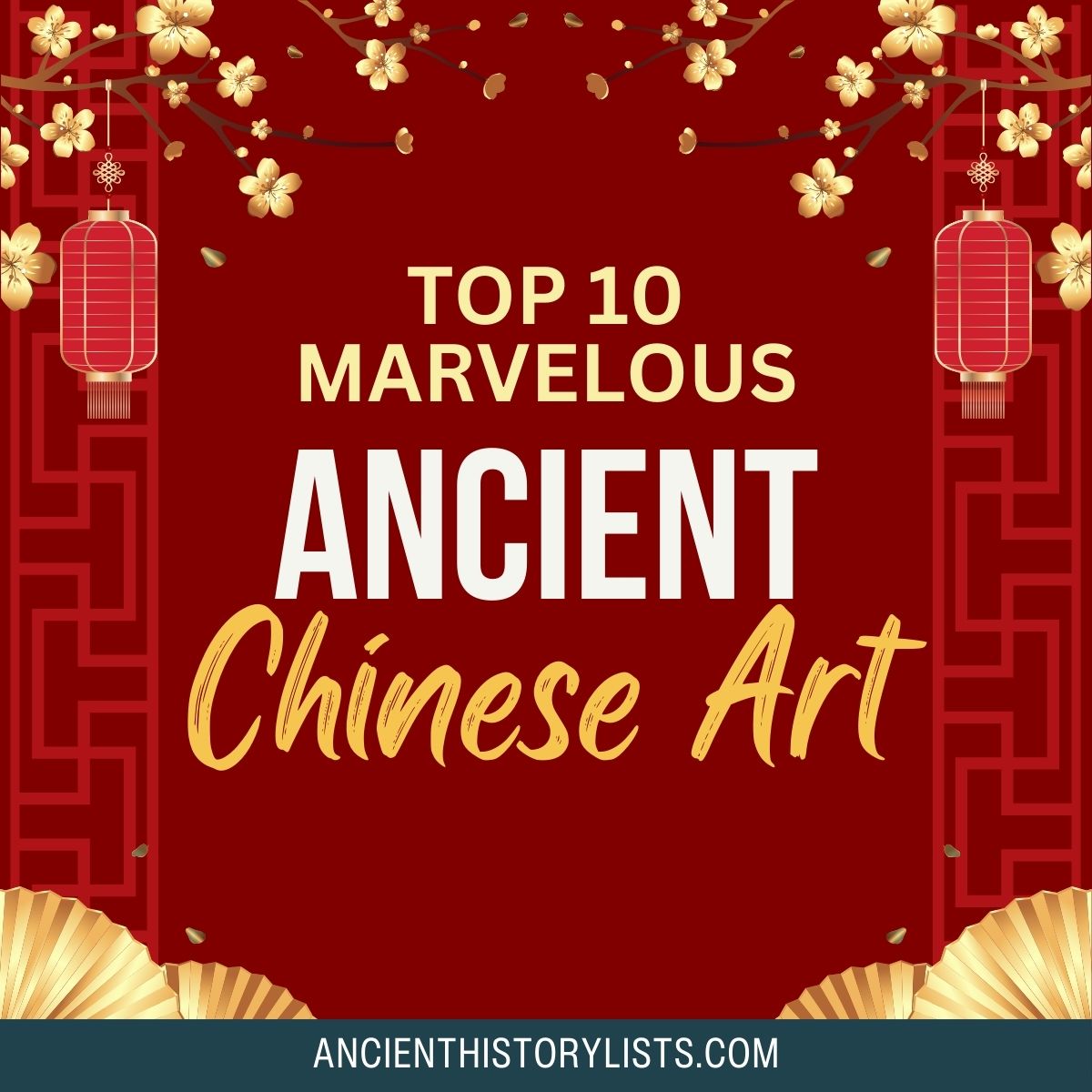
The art has evolved with time, and religion, politics, and philosophy have all played an important role in ancient Chinese art. This includes calligraphy, poetry, and painting and these styles had their own characteristics depending on the dynasty.
Without further ado, here are the 10 most popular types of ancient Chinese art:
10. Neolithic Pottery
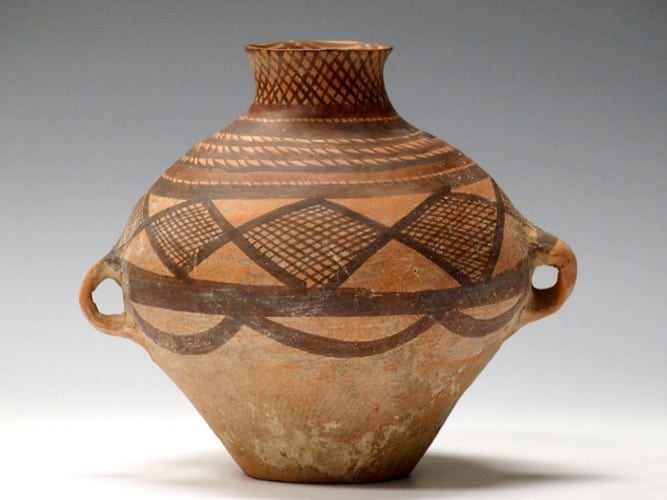
Life was simple in the Neolithic period, and people in ancient China spent their lives farming and caring for their animals. Art during the Neolithic period has been classified into a mosaic of 22 regional cultures by archeologists. According to archeological findings, art in ancient China began to take shape around 7,500 BC.
The first evidence of pottery in ancient China was seen in 18,000 BC which was ahead of other ancient civilizations and it has evolved with time. Around 4000 BC, colored ceramic art started to appear in China and involved a series of four steps: forming, firing, decorating, and refining.
9. Jade Culture
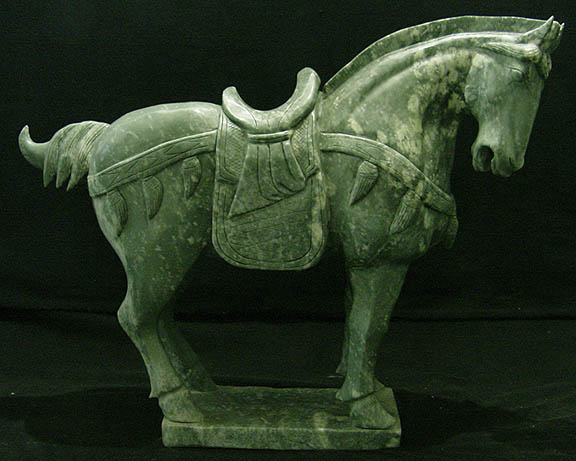
Jade was more than a stone in ancient China; it was the symbol of perfection, immortality, nobility, and constancy, and the Chinese considered it to be the essence of heaven and earth.
In ancient China heaven was considered to be round and earth was considered to be square. The hole in the center of many jade ornaments, known as pie, was created to honor the gods in heaven. The rectangular side was called tsung and was created to honor the earth.
Evidence of the use of jade was found in the Yangtze River delta during the Liangzhu cultural period (3400 BC–2250 BC). Large pieces of ritual jade such as bi discs, yue axes, and cong cylinders were popular.
This art also featured different animals such as turtles, birds, and fish. The manufacture of jade began to rise during the Shan dynasty (1766 BC–1122 BC) when the Chinese had the technology to efficiently craft every imaginable object from jade.
8. Han Art
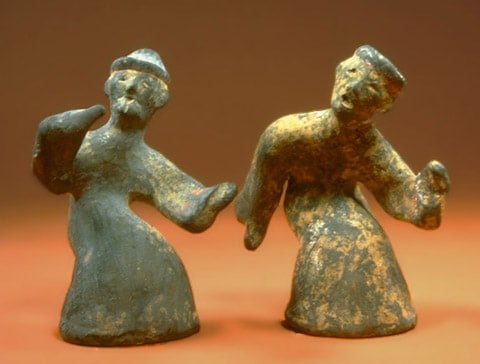
During the Han dynasty (206 BC–220 AD), ancient Chinese art reached its peak. The Han dynasty was also known as the golden age for Chinese art, and included music, literature, and poetry as well as the visual arts. The Han dynasty also witnessed the development of tomb art, where art was created exclusively for funerals.
During the Han dynasty, there was also a massive growth in bronze sculpture. Archeologists discovered a bronze horse in the second century BC tombs at Kansu. Miniature bronze statues of social figures were also common, and lamps with glided bronzeware and decorated mirrors were another feature of the Han dynasty.
7. Gu Kaizhi Paintings
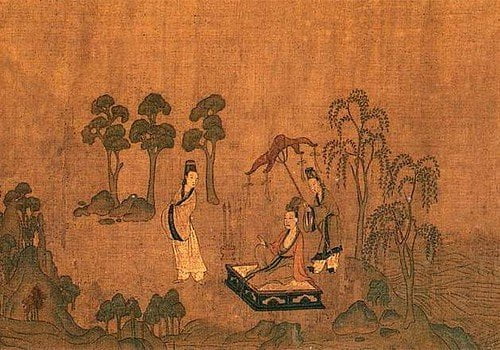
Gu Kaizhi was a painter and author of several books on painting which became the inspiration for later Chinese scholar and painters. His art still flourishes today through copies of silk scroll paintings.
He was known for the embellishment of the eyes in portrait painting, and later, his graphics techniques became a central feature of traditional Chinese paintings.
Most of his paintings involved silk and polychrome. Examples of his artwork are the Nymph of the Luo River, Wise and Benevolent Women, and the Admonitions of the Instructress to the Court Ladies. As well as painting, he was also known for his poetry and calligraphy.
6. Buddhist Architecture and Sculpture
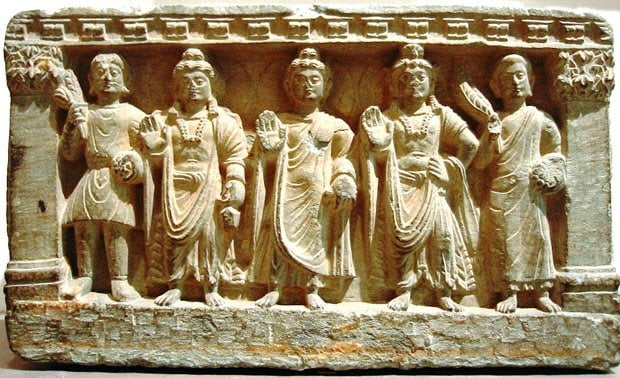
When Buddhism spread to China in 67 AD during the Han dynasty it has a significant effect on the development of art and culture, and during this time many Buddhist scriptures were created.
During the Jin period (265 –420 AD), Buddhist writing emerged and many Buddhist scriptures were translated. The legacy of Buddhism in China has led to one of the most extensive collections of Buddhist art in the world. This can be seen in famous sculptural sites such as the Mogao Caves, the Longmen, and the Bingling Temple.
5. Cloissone
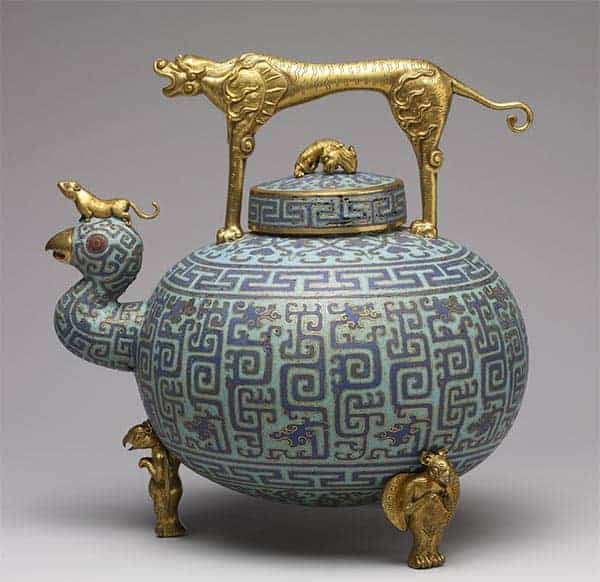
Cloissone is derived from the French word cloison which means “partition.” It was a famous ancient technique for decorating metalwork objects. Cloissone was mostly used for decorating utensils that were made from copper or bronze. Thin copper wire was glued on to the objects and fine pieces of design or themes were drawn over it.
Cloisonne was mostly popular in Yunnan province during Mongol rule, and many fine pieces were produced during this time. Earliest cloisonne was very fragile and few pieces survive today.
4. Landscape Paintings
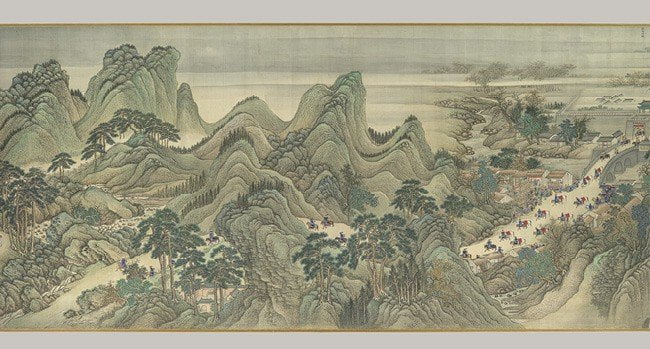
China has produced some of the finest landscape paintings from the Five Dynasties (907–960 AD) period to the Northern Song period (960–1127 AD). This period is also known as the “great age of Chinese landscapes.”
There were two distinct techniques that were popular in ancient China. In the north, paintings of towering mountains were famous, and they were painted with ink wash, black lines, and sharp, dotted brushstrokes. Popular artists in this style were Guo Xi, Fan Kuan, and Jing Hao. In the south, paintings of rivers and hills were more common. Artists like Dong Yuan, Ju Ran, and others depicted their native countryside with rubbed brushwork.
The beginning of the Tang dynasty was the era of shanshui or “mountain water” paintings. Most of these landscape paintings were monochromatic and sparse which is known as shuimohua. The intention was to depict an emotion or sense of surrounding.
The technique known as “mind landscape” started to evolve during the Yuan dynasty. This was a technique that contained calligraphic brushwork which represented the inner spirit of the artist.
3. Poetry
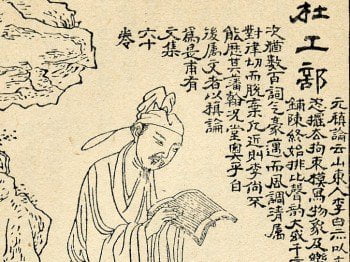
Poetry in ancient China was an expression of both public and private emotion, and readers were able to understand the inner life of the writer by reading his/her poetry. Classical Chinese poetry includes the three basic elements known as shi, ci, and qu.
During the Han dynasty, yuefu, a style of folk poetry became popular. During the Six Dynasties (220–589 AD), there was a gradual development in poetry.
There are only a few examples of poetry left from ancient China because of a cruel historical event when the emperor Qin Shihuang decided to burning books and kill scholars. Some of the major surviving examples of poetry in ancient China are the Midnight Songs, the Seven Sages of the Bamboo Grove, the great Fields and Garden poetry, and the Orchid Pavilion Gathering poems.
2. Chinese Music
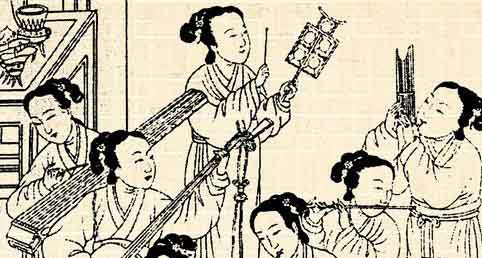
The ancient Chinese people brought their music from Africa to China. They clapped hands and sang songs accompanied by hand bone pipes and drums. Ling Lun is considered to have founded Chinese music during the Zhou dynasty. He established a foundation tone from a piece of bamboo pipe that produced the correct sound, a little like birdsong.
During the Qin dynasty (221 BC–7 BC), the first “imperial music bureau” was established and expanded during the reign of Han Wu Di (140 BC–87 BC). The oldest written piece of music from ancient China is Youlan, or Solitary Orchid, by Coufucius. However, despite the popularity of music, musicians were ranked lower than painters.
1. Chinese Silk
Silk was more widespread than art, and it is one of the greatest inventions of ancient China. It was used in a variety of sectors such as fishing, writing, music, and clothing. A good example of silk art can be seen from excavations of the Mawangdui Han tomb.
A silkworm can only produce 1,000 meters of silk in its lifespan of 28 days, and therefore silk was highly prized in China and around the world. It was exported from China using an overland route known as the Silk Road.
Conclusion
Art in China had grown in a phenomenal way, and has adapted and changed along with China’s culture and traditions. Ancient Chinese art is not limited to the above-mentioned list; rather these examples have created a foundation for future artistic accomplishments.